This weekend, I had my world expanded up in the Big Apple. Solace New York hosted an event called Strong New York, created by Kenny Santucci with the purpose of supporting the Alzheimer’s Association and the 400,000+ New Yorkers who suffer from this disease. Now in its third year, Strong New York brought together top talent in training, fitness, wellness, and nutrition for three days of workouts, seminars, and panel discussions.
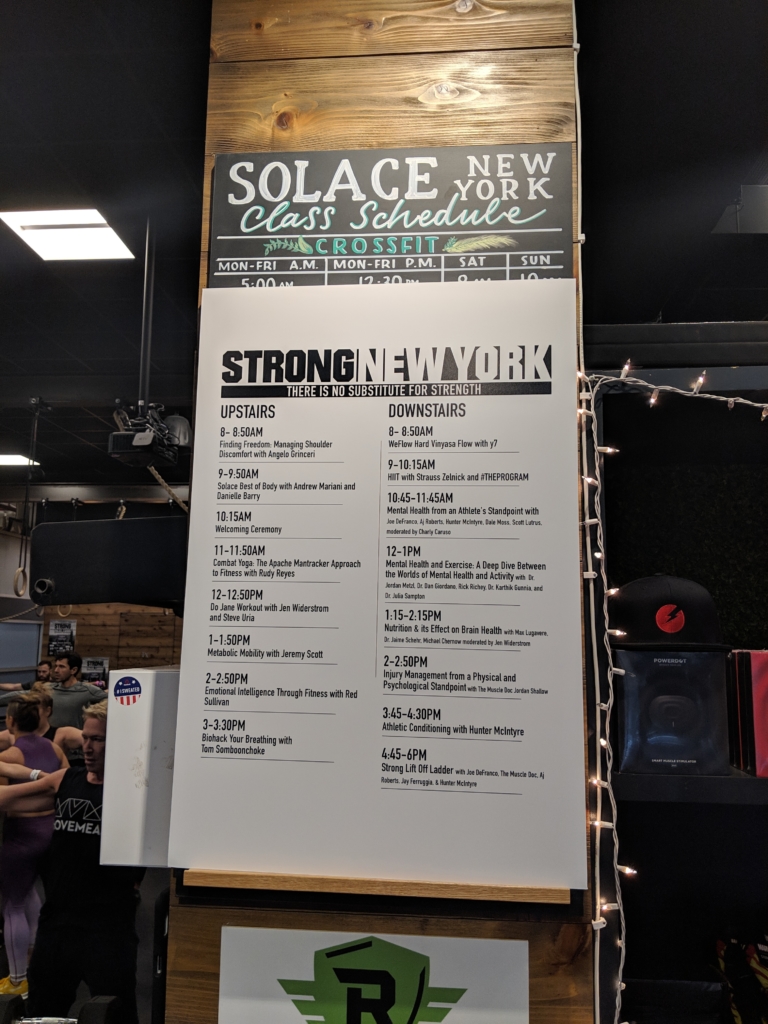
Strong New York agenda
I’ve been in OCR for a long time and I thought I knew a lot of people in our industry, but my world exploded in size at this event that only two other OCR people attended. The rest, well, these are folks that we need to get to know better because they can create a difference in our sport. What they had to say impacts the quality of our lives and who we are as athletes.
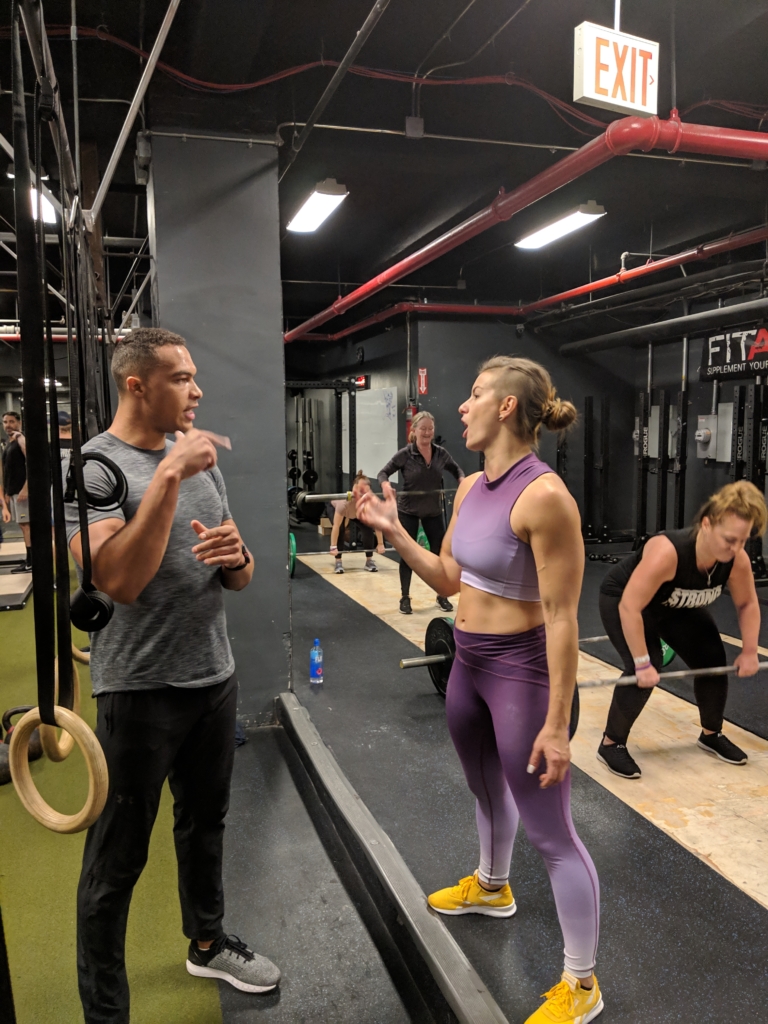
Jen Widerstrom
While Mud Run Guide sent me up there to see Hunter McIntyre (more on him later), I met and hung out with a bunch of other major industry players I had never heard of before this event. Before I go any further in this review, I want to make this point: While our OCR world is big and growing, it is still somewhat limited and non-integrated with the larger world of fitness. While this event was in no way meant to be OCR-centric, it brought to the forefront of my attention that if OCR is to continue on its growth path, it needs to be part of this is the kind of expansion events. And so do you.
That OCR was represented by Hunter, Faye Stenning, and me, paired with the fact that I have never seen anything like this in the OCR shows how far we have to go. Why didn’t we know about this in previous years and why didn’t we have a bigger showing whether in the audience, the panels, or in demo tents? And why aren’t we doing stuff like this in the OCR world? I think we’re too inwardly focused and it’s time for a breakout.
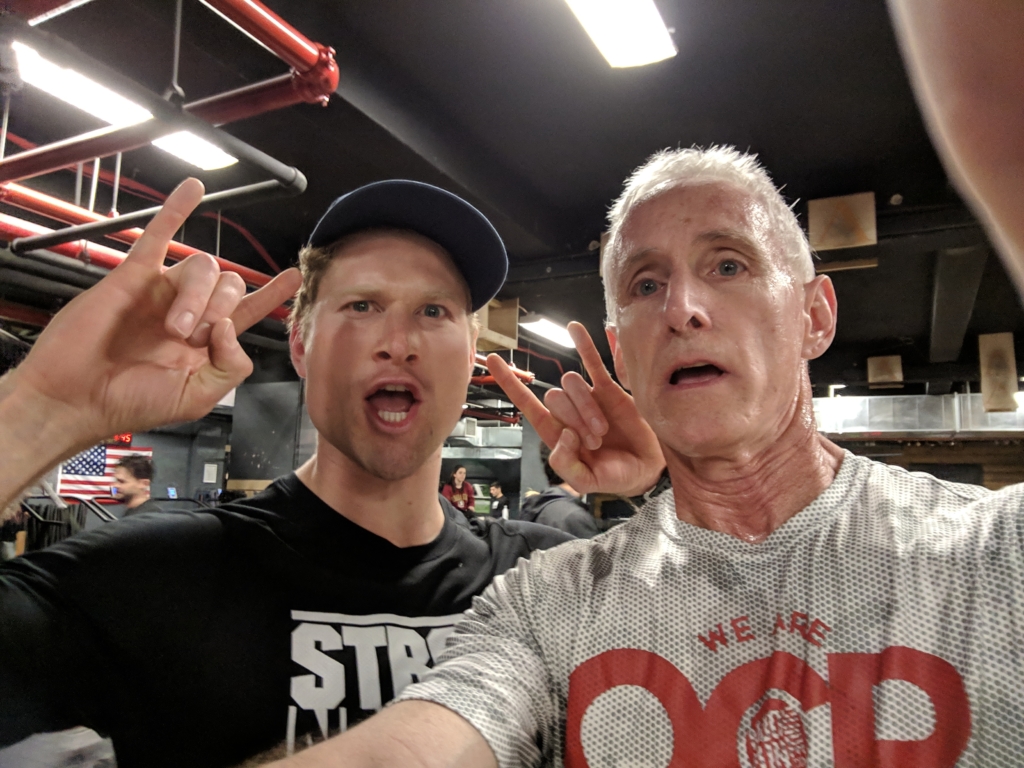
Hunter and the hunted
I hope after reading this, checking out the website, and seeing who was there, you’ll make plans to attend next year. Also, you’ll come away with some ideas on how to integrate OCR with the greater world of fitness, wellness, nutrition, and charity outside of event festival areas.
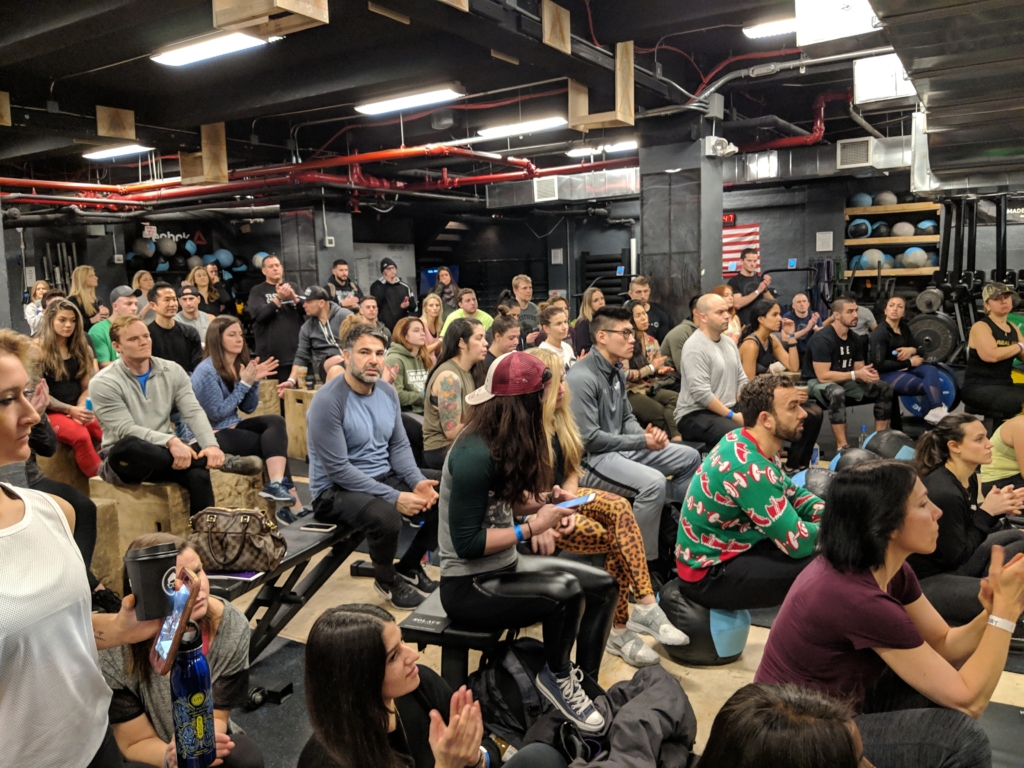
Each panel drew a huge crowd
The main event began mid-morning Saturday. Chelsea-Lynn Rudder gathered the crowd and told us why we were there. While we are fit, there may be those in our families, and certainly those 400,000 in New York City, affected by Alzheimers and dementia. By a show of hands, few in the room were untouched by these diseases. After setting the tone for the day, the first panel was introduced by Charly Caruso of ESPN and WWE.
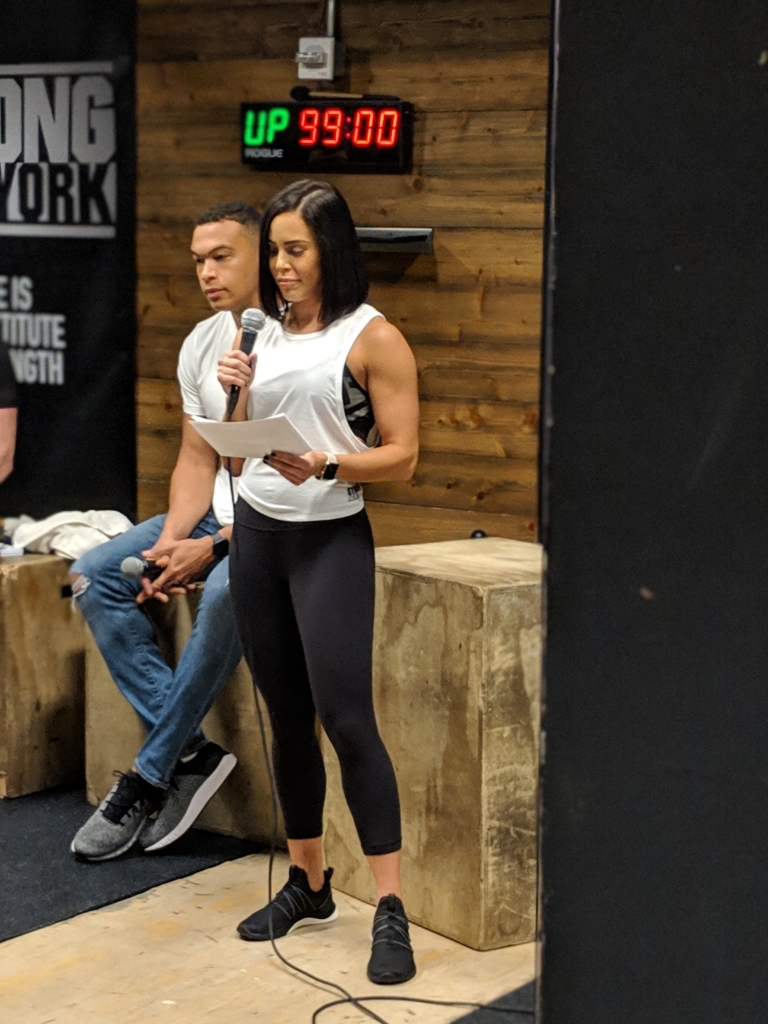
Charly Caruso
This panel consisted of Joe DeFranco, Scott Lutrus, AJ Roberts, Hunter McIntyre, and Dale Moss. They discussed “Mental Health from an Athlete’s Standpoint”. If you’re like me and don’t know any of these guys except Hunter, I encourage you to look them up. These are the kinds of people whose stories we need to hear and understand. They bring a professional perspective to mental health and shared what you need to know and do to succeed at anything. AJ Roberts summed this one up perfectly with this advice, “Be a creator, not a consumer.” Make your world happen; don’t take it from someone else.
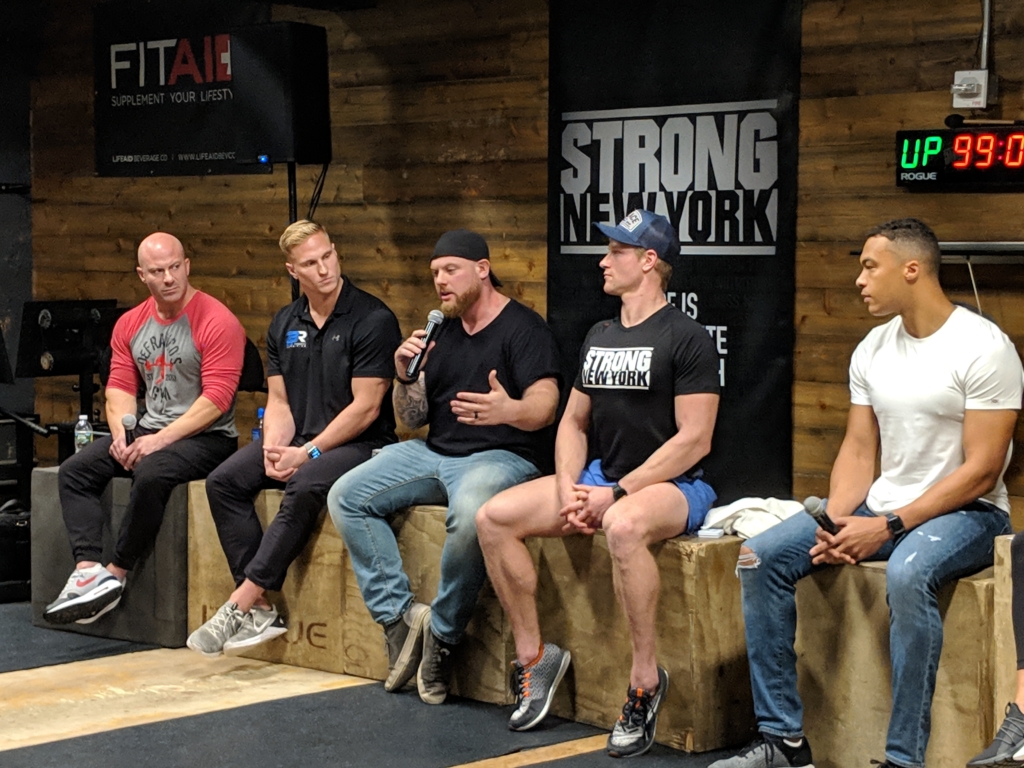
Telling us what it takes to succeed
At the conclusion, I talked to Faye Stenning for a while. I asked her what she thought of the fact that the panel was lacking a female perspective. She was disappointed, but she also disagreed almost entirely with what they had to say. She claims her success in OCR has nothing to do with this single-minded focus the panel touted. Instead, she follows a counter-intuitive approach recommended in a book “The Subtle Art of Not Giving a F*ck” by Mark Manson.
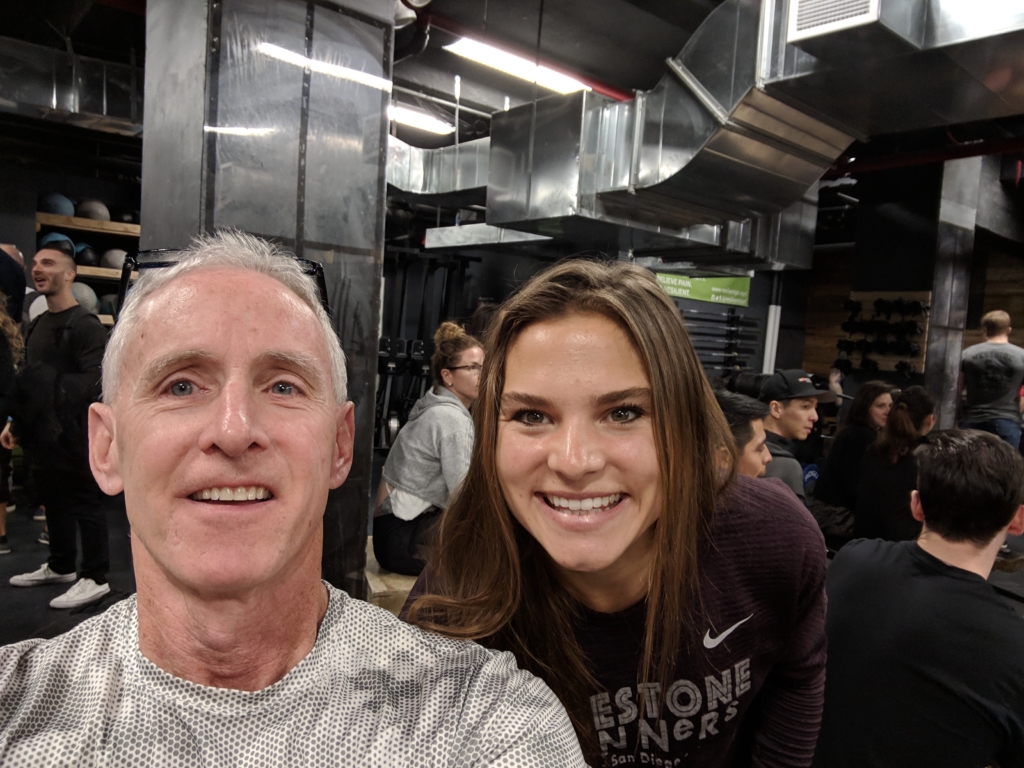
Faye Stenning
The next talk was by Jordan Shallow, the Muscle Doc. His forty-five minutes with us focused on preventing injury. His brilliant hands-on show and tell approach quickly captured everyone in the audience. Now we understand the difference between strength and stability in two major joints like the shoulder and hip. Now we understand why after twenty years of strengthening the rotator cuff with the same exercise, we still injure our shoulders. If you want to find out why, subscribe to his YouTube channel, read his stuff, and then talk to your PT, chiro, and ortho about it and start getting better. What he had to say changed my whole outlook on training and the way I will design my future workouts for the better.
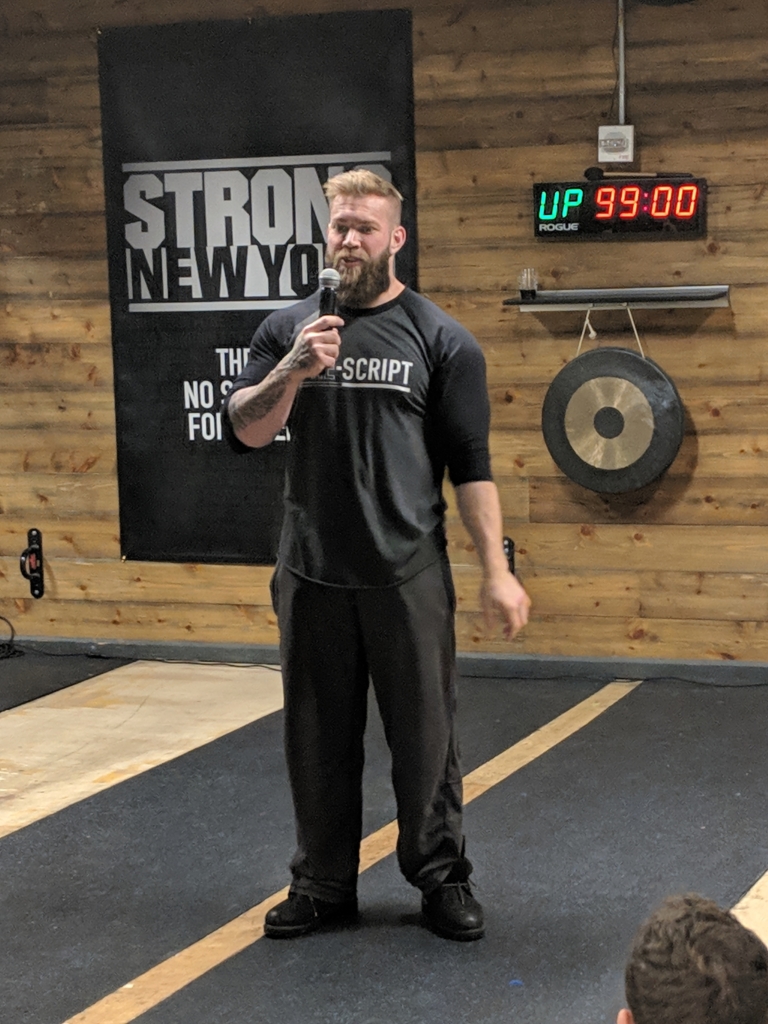
Jordan Shallow – the Muscle Doc
I grabbed a very healthy avocado toast and mint tea lunch at the Blank Slate around the corner. That turned out to be a very good choice according to the panel at the “Nutrition & its Effect on Brain Health” session. Jen Widerstrom of The Biggest Loser hosted this Q&A panel. She was joined by more people I didn’t know but have now connected with on social media: NY Times best-selling author Max Lugavere, Dr. Jamie Schehr, and Michael Chernow of Food Porn and Seamore’s restaurant. They all agreed on one thing: there is no one size fits all food that is right for everyone. Notice I did not say “diet.” Learn to listen to your body; stop giving a f*ck what everyone else says about you, what you should look like, or how you should feel; and start eating real food. On the latter they all agreed. No matter what you eat, it must be real. Not created in a laboratory, not produced by a machine, not loaded with artificial ingredients. Grown from the soil, raised on natural grounds and grasses, so that when it comes to you in a package or on a plate, it is recognizable as something natural. Michael did give one caution however when asked, “Would any of you ever eat the untouched leftovers from somebody else’s plate at a restaurant?” “As someone in the restaurant business, I’m telling you, absolutely not!”
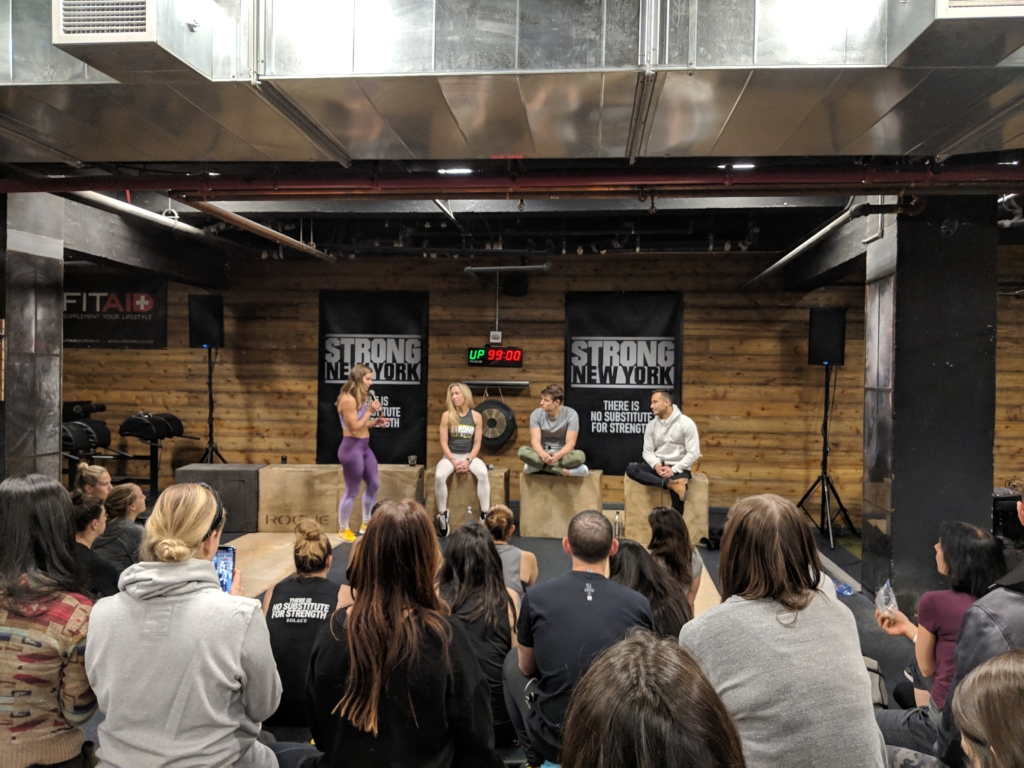
This is your brain on good food
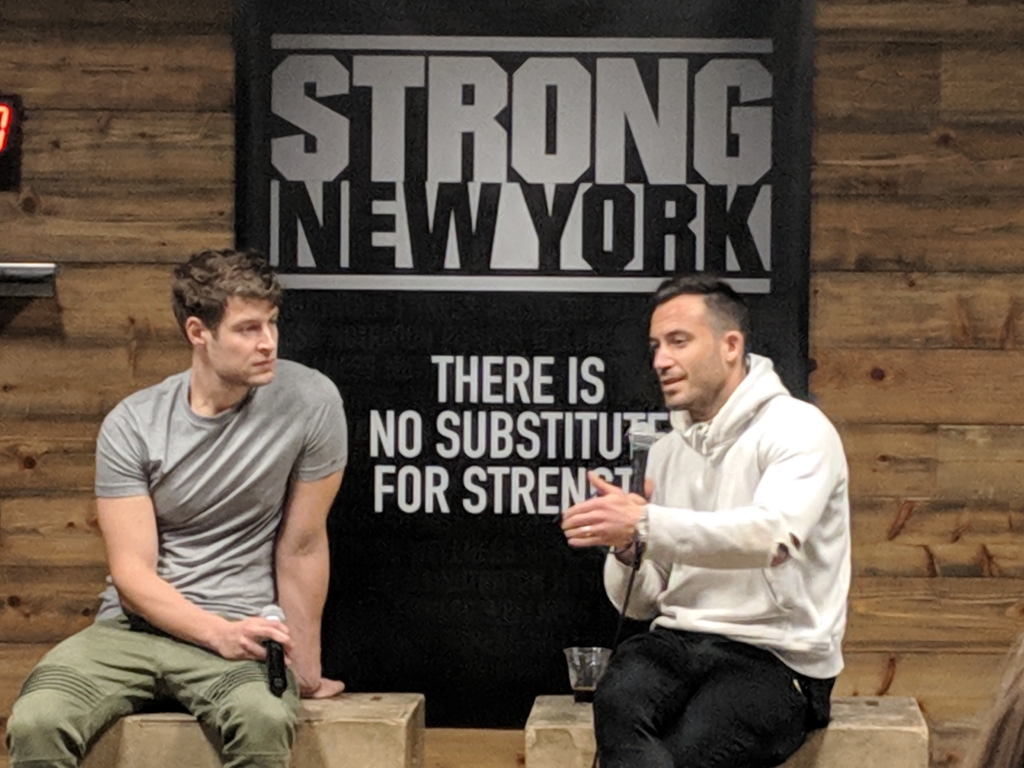
Alex and Michael talk good food
The afternoon capped off with a workout led by Hunter McIntyre. He broke us up into three groups and then took us through a whirlwind warmup in three stations. Then the punishment began in the main round of strength exercises. His capstone 1-for-1 beatdown put a lot of people on the floor by the time they were finished. We loved it and Hunter did a great job working the room of about 100 fitness fanatics. He was truly in his element. I can see how he maintains less than 10% body fat year round with these kinds of WODs, his level of energy and mental toughness, and his strict food intake. When I asked him how he does it, he said, “It’s easy!” Alas, I had hoped he would show me by joining me for lunch. I still think he would have been proud of my high-fat avocado toast choice.
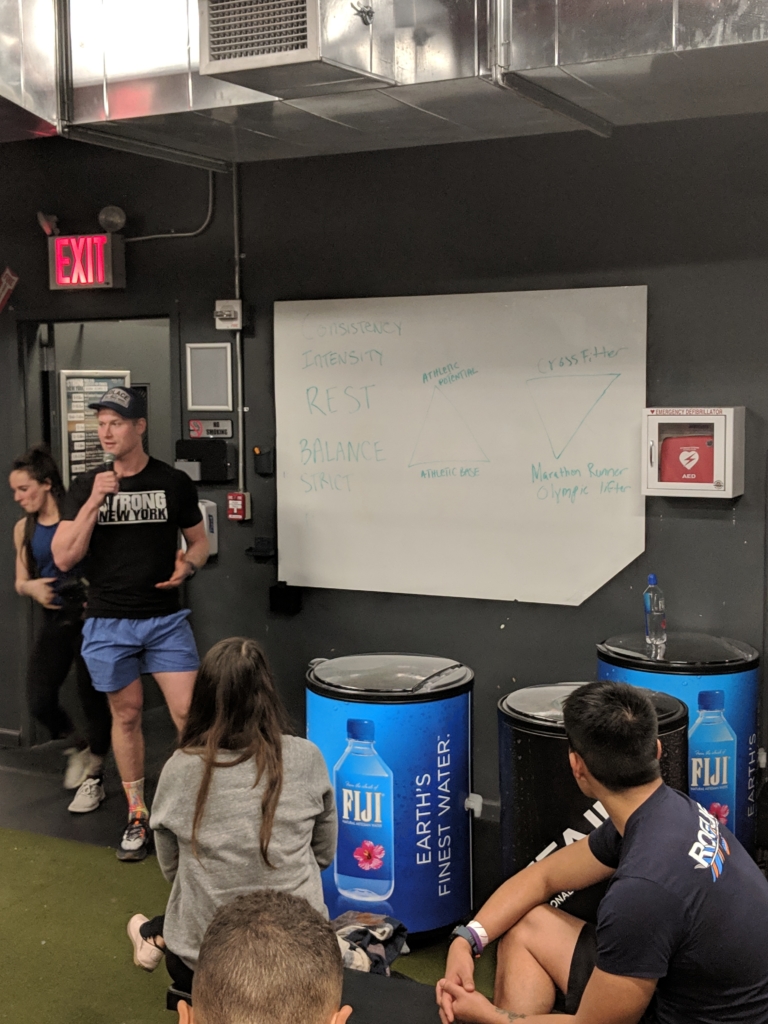
Chalk talk before the WOD
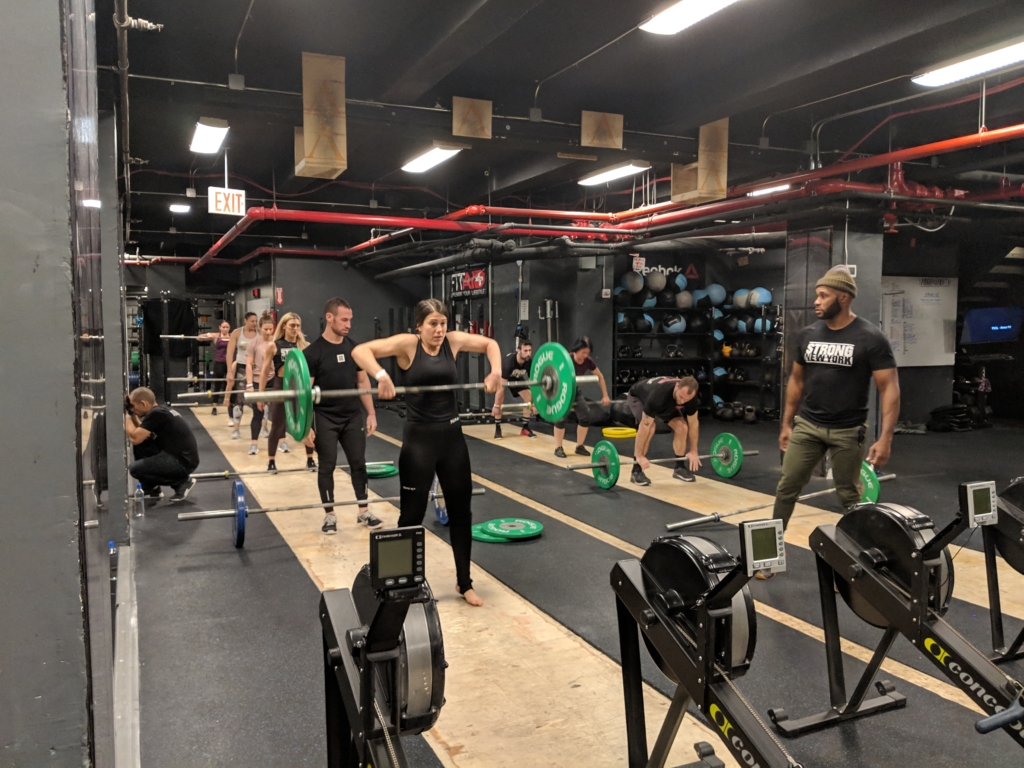
The Sheriff's WOD
Enlightened by the events of the day, I walked back to Penn Station to catch the train home. I grabbed a dinner of rice, roast chicken breast, and baby carrots, another great choice. I felt physically, emotionally, and mentally better for it. I made sure to clarify that with Max Lugavere. Maybe he’ll use me as an example when he’s on Dr. Oz again later this week.
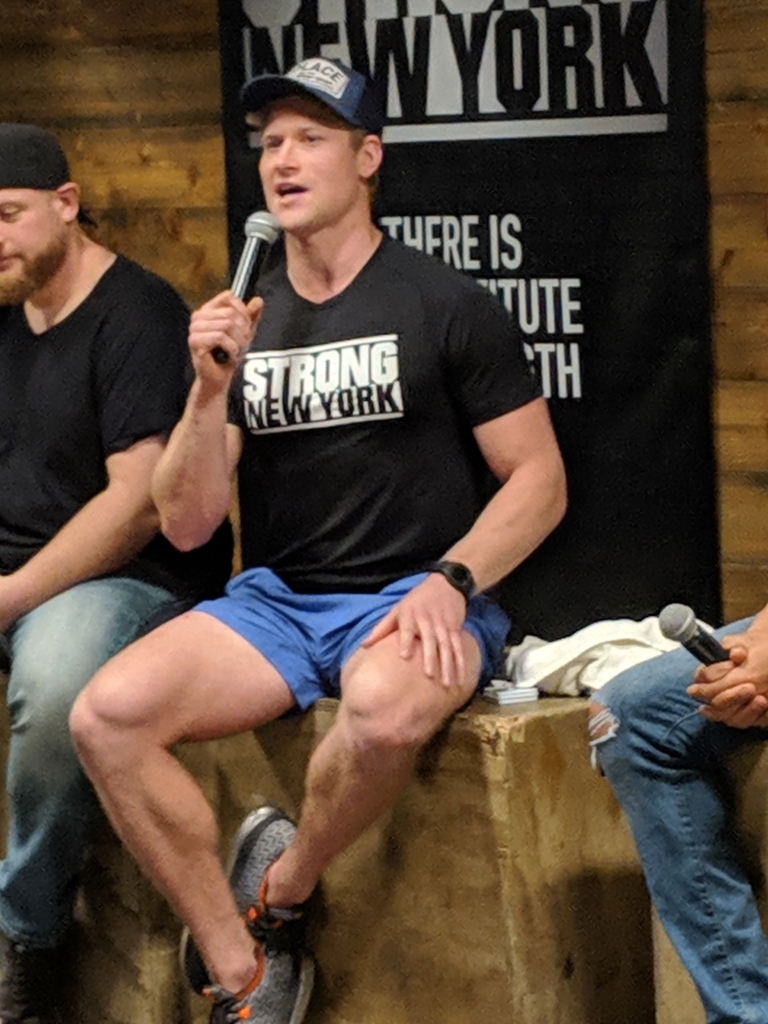
A few witty and serious tips from the Sheriff
I highly recommend my readers to connect with these people and other professionals like them. You’ll feel better, eat better, and perform better. Come to Strong New York next year and find out why I gave it five of five stars on Mud Run Guide!


Interesting perspcetive you propose in your article. On one side the OCR world has grown tremendously in a relative short period of time. On the other side, the sport is still in its infancy and looking to be sustainable. I agree that integrating the sport with other disciplines and training methods will only make for a better all-around racer and person. Would OCR benefit from the popularity similar to what cross fit has become? Does it make sense to incorporate cross fit style training methods or HIIT into OCR? I think that depends on the individual. At the end of the day you have to do what works best for you. It all comes down to how the sport will promote itself. Finding that place deep down within ourselves is what makes the challenge of OCR fun, fresh and exciting.
Hi John. Thank you for your feedback. The debate is still on about where OCR is in its growth curve. I personally agree with you that it is looking to be sustainable. To that end, it indeed needs self-promotion. But more than that, it needs to get outside of itself, not necessarily into another breed of training, but into a sense of being.